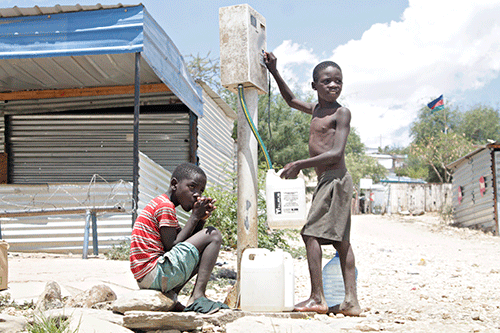The Otjozondjupa region, strategically located in the heart of Namibia, boasts a diverse population, massive agricultural production, mining operations and has made great strides towards housing provision.
In terms of housing, Otjozondjupa governor James Uerikua said the region managed to build houses under the Build Together programme and the mass housing programme, which has enabled low-earning inhabitants of the region to be called homeowners. Since 2019, about 1 500 houses have been constructed, including ultra-low houses under the Shack Dwellers Federation of Namibia and Build Together programmes.
In the past three years, more than 10 000 erven have been serviced in the region to give room for more development.
He also singled out the unity in diversity as one major achievement the region can celebrate, come 21 March 2022.
Apart from the peace and stability in the Otjozondjupa region, access to safe drinking water is still a concern, although the region is blessed with abundant underground water.
Uerikua said although government, through the office of the Prime Minister, recently allocated an amount of over N$10 million to drill boreholes in the region, most of these did not yield results, and they did not find water. He said the region has come up with a water concept plan, which has been submitted to the agriculture ministry for funding. Besides the lack of potable water, Uerikua highlighted access to serviced land as one of the burning challenges that continue to haunt Otjozondjupa, and it hinders development.
Otjozondjupa is centrally located and borders seven other regions, and the region has thus seen a high influx of people. This has put pressure on the local authorities in the provision of serviced land for housing purposes. Surprisingly, he mentioned low food production capacity - although the region has the highest number of maize producers in the maize triangle between Otavi, Tsumeb and Grootfontein. “There have been very low agricultural activities elsewhere in the region in terms of food production, and the region also does not host a green scheme,” he noted. Despite challenges in economic growth over the years, the government has managed to build schools in the region. “The region has made tremendous strides towards the improvement of education through the construction of schools and hostel facilities,” he maintained.
In total, there are 88 schools, of which 68 are government-owned and 20 are privately-run. Out of the 88 schools, a total of 24 were constructed after Independence.
The region has a total of 27 government hostels and eight community dwellings for needy students.
Uerikua reported that the Otjozondjupa Regional Council received N$31 million under the Covid-19 school projects’ initiative to renovate and construct hostels and ablution facilities. Another challenge facing the region is the lack of a referral hospital as currently, all cases that need special care are transported to the state hospitals in Windhoek. The region has nonetheless seen the construction of various health facilities, and can proudly say that about 95% of the regional population has access to health facilities. According to the 2011 census, the region has a catchment population of 163 000, with four district hospitals, namely Okahandja, Okakarara, Grootfontein and Otjiwarongo. The two health centres are Otavi & Mangetti, while there are about 19 clinics in various constituencies.
On network coverage, the Otjozondjupa region has seen an increase in 3G and 4G broadband, with 64% and 37% coverage, respectively, while 2G has a geographical coverage of 75% and 88% of the population.
According to the Communications Regulatory Authority of Namibia (Cran)’s 2021 data, Otjozondjupa ranks number three, with a total of 100 network towers.
Among the rural services’ projects is the rural sanitation project that aims to provide proper sanitation in rural and peri-urban areas. “While there is a need for more sanitation programmes in the region, this project has benefited a total of 232 beneficiaries with the construction of toilets in various constituencies of the region at over N$1.5 million,” Uerikua stated.
Electrification remains an ongoing process in the region, with Mangetti, Gam and Tsumkwe being the milestones in the electrification of the region.
–anakale@nepc.com.na


